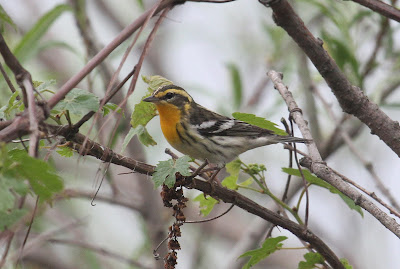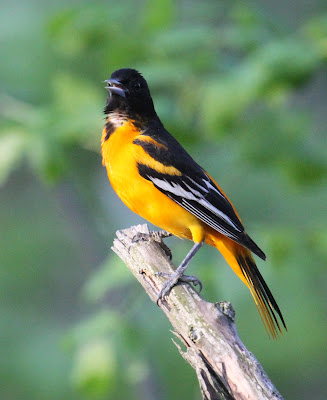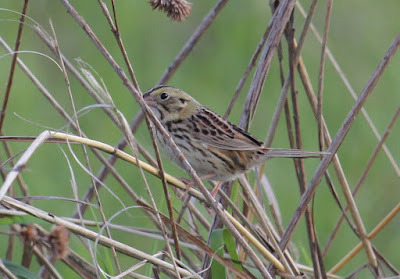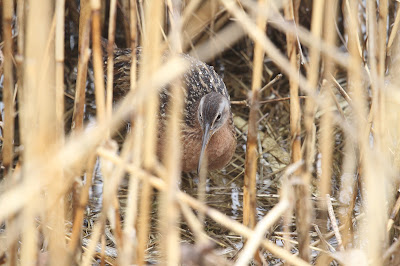Just like birds themselves, time flies. Hard as it is to believe for some of us,
this blog you've now got on screen first
took off one year ago. We hope it has achieved its objective, as expressed in the first blog-presentation entry published
on 9 May 2010:
appeal to a wider public by giving the breaking news on Extremadura's birdlife. The final say is the readers'. But the number of hits over the last year seems to justify our endeavour and encourages us to continue. There are no figures on the first feet-finding months, but,
Spanish version,
from July 2010 the site has clocked up over 25,000 hits, with a peak of nearly 4000 in March 2011. True it is that the blog took some time to get going, not topping 1000 monthly hits until September 2010 and 3000 in January 2011. The
English version has registered 6500 hits in the same period, with a much slower upward trend, not topping 1000 monthly hits until March 2011, peaking at 1100 in April. Between both versions, therefore, some months have clocked up over 5000 hits (lots or few, according to the yardstick used).
The
second entry of "Bird of Extremadura", and the first with content after the presentation, was entitled "
Winter Hotspots", dealing with the provisional
species-richness map after the fieldwork of the SEO/BirdLife-brokered Atlas of Wintering Birds in Spain. The definitive map has just been published in SEO's
Bird Monitoring Survey 2009-2010 (Escandell et al., 2011). The picture hasn't changed much, although in the later version actual figures for the number of species in each grid are given, with red hues for those with over 50 and blue hues for those with fewer. The importance of Extremadura, especially Cáceres and North Badajoz, still stands out, but another notable feature is the species richness of some of the rivers. It's easy to pick out the course of the rivers Duero, Ebro, Guadalquivir, Guadiana and Tagus, and even some of the bigger tributaries like Jarama, Alberche and Aragón.
 Acknowledgements
Acknowledgements: This first anniversary would not have been possible without the collaboration of many people, especially Dave Langlois and Sergio Mayordomo. The first has translated nearly every entry into English while the second has painstakingly recorded all the sightings of interest in Extremadura to compile the month by
month summaries. This blog would probably not exist but for the
Goce birdwatching forum, a lively virtual meeting and debating ground for Extremadura's bird lovers, always teeming with ideas and information that this blog has drawn on constantly. I'd like to give my thanks to all the participants in this forum and also those from elsewhere who have chipped in from time to time. Many thanks to one and all. Javier Prieta
.
Escandell, V.; Palomino, D.; Molina, B.; Leal, A.; Remacha, C.; Bermejo, A.; De la Puente, J. y del Moral, J. C. (Eds.) 2011. Programas de seguimiento de SEO/BirdLife en 2009-2010. SEO/BirdLife. Madrid.
Just like birds themselves, time flies. Hard as it is to believe for some of us,
this blog you've now got on screen first
took off one year ago. We hope it has achieved its objective, as expressed in the first blog-presentation entry published
on 9 May 2010:
appeal to a wider public by giving the breaking news on Extremadura's birdlife. The final say is the readers'. But the number of hits over the last year seems to justify our endeavour and encourages us to continue. There are no figures on the first feet-finding months, but,
Spanish version,
from July 2010 the site has clocked up over 25,000 hits, with a peak of nearly 4000 in March 2011. True it is that the blog took some time to get going, not topping 1000 monthly hits until September 2010 and 3000 in January 2011. The
English version has registered 6500 hits in the same period, with a much slower upward trend, not topping 1000 monthly hits until March 2011, peaking at 1100 in April. Between both versions, therefore, some months have clocked up over 5000 hits (lots or few, according to the yardstick used).
The
second entry of "Bird of Extremadura", and the first with content after the presentation, was entitled "
Winter Hotspots", dealing with the provisional
species-richness map after the fieldwork of the SEO/BirdLife-brokered Atlas of Wintering Birds in Spain. The definitive map has just been published in SEO's
Bird Monitoring Survey 2009-2010 (Escandell et al., 2011). The picture hasn't changed much, although in the later version actual figures for the number of species in each grid are given, with red hues for those with over 50 and blue hues for those with fewer. The importance of Extremadura, especially Cáceres and North Badajoz, still stands out, but another notable feature is the species richness of some of the rivers. It's easy to pick out the course of the rivers Duero, Ebro, Guadalquivir, Guadiana and Tagus, and even some of the bigger tributaries like Jarama, Alberche and Aragón.
 Acknowledgements
Acknowledgements: This first anniversary would not have been possible without the collaboration of many people, especially Dave Langlois and Sergio Mayordomo. The first has translated nearly every entry into English while the second has painstakingly recorded all the sightings of interest in Extremadura to compile the month by
month summaries. This blog would probably not exist but for the
Goce birdwatching forum, a lively virtual meeting and debating ground for Extremadura's bird lovers, always teeming with ideas and information that this blog has drawn on constantly. I'd like to give my thanks to all the participants in this forum and also those from elsewhere who have chipped in from time to time. Many thanks to one and all. Javier Prieta
.
Escandell, V.; Palomino, D.; Molina, B.; Leal, A.; Remacha, C.; Bermejo, A.; De la Puente, J. y del Moral, J. C. (Eds.) 2011. Programas de seguimiento de SEO/BirdLife en 2009-2010. SEO/BirdLife. Madrid.




















































